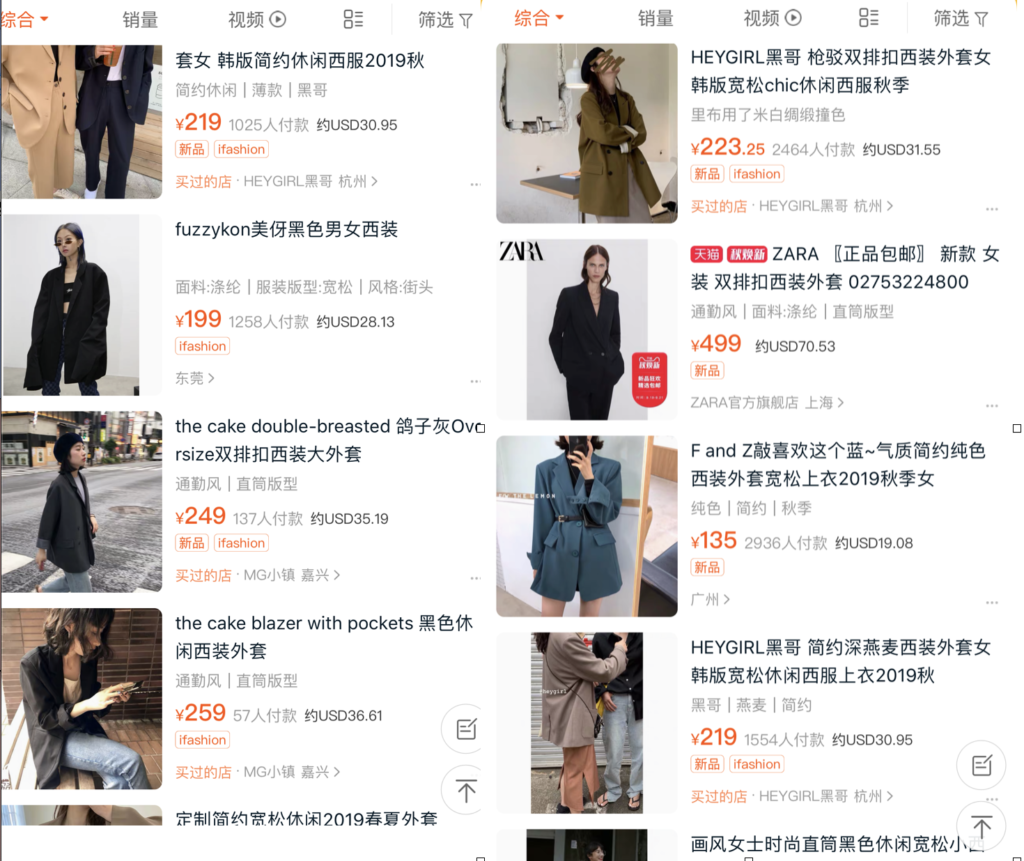Officially entering the Chinese market in 2011, Forever 21 was once viewed as a fashionable while cheap brand for Chinese consumers. I grew up in a small developing city in China. Before I went to Beijing to study, I’ve never seen a Forever 21 store. When I first went shopping at F21 in Sanlitun, the most famous commercial district in Beijing, I was beyond happy. Five years ago the jacket I bought at F21 seemed nice and cheap for me. But that was also my last purchase at F21. With the rapid growth of Taobao and other Chinese e-commerce platforms, I never bought another item from F21. On April 29th, 2019, Forever 21 formally claimed to quit the Chinese market. So from 2011 to 2019, what did F21 do resulting in their failure in China? Or to say, what did F21 not do to succeed?
To analyze this question, first, we need to find the quality and marketing strategy F21 used in China. On the one hand, many people in China complained about their poor quality and a bad fit for Asians. When I was browsing in F21 before, I was sometimes attracted by its fashion design, however the moment I entered the fitting room, it was a nightmare. Not only did its material feel uncomfortable, but the fit was also weird: Either the sleeves were too long for Asians, or the v-shaped collars were too broad. As we can tell from their design and brand name, their target is the young who want to chase the fashion, but the changeability of young people is much higher than adults. It’s easy for teenagers to change their style during their growth. For example, when I was nineteen, I insanely fell in love with BigBang, the Korean hip-hop band, and I started to love Korean fashion style so much. But now I don’t love that kind of style anymore. So it’s too limited for them to focus on the young.
On the other hand, during its development in China, F21 severely lacked a localization strategy. Before 2010, the e-commerce platform in China had not developed so much, however, nine years later, I can tell almost everyone in China can’t live without Taobao, the most important e-commerce platform in China. Every year since 2009 on November 11th, Taobao has the greatest promotions for consumers. The “11.11” has developed into a whole system rather than a single promotion day. People start to prepare for “11.11” a month before. Many traditional fast fashion brands like Zara, H&M, F21, etc. initially refused to enter this system. They kept their traditional marketing strategy with their own promotions and they had confidence in their lower price. However, when they make a further awareness of Taobao and other Chinese e-commerce platforms, they found almost no advantage of their traditional marketing strategy. Let’s take a look at the price comparison between F21 and Taobao. (Since the official website of F21 China no longer exists, I can only find the price on F21 America website and convert dollars into RMB.)


As shown above, there is just one choice at F21 when you want to buy a blazer. But when you search it on Taobao, there are so many different choices for you with different colors, styles, sizes, etc. The price of F21 is $32, in RMB around 224, so there is no price advantage of F21 when comparing to Taobao, and you can even find much cheaper one if you set a price range on Taobao. On the F21 America website, when you spend more than $30 the delivery is free. But on Taobao or other Chinese e-commerce platforms, a product of RMB 10 can include free shipping.
In summary, the localization and customization of F21 were too limited for Chinese, and this phenomenon could not only be found in F21 but also exists in many other fast brands such as Zara, H&M, Pull&Bear, etc. With the development of e-commerce in China, these brands seem to lose many customers. Does it mean the failure or the downward trend of fast fashion brands? And how can they survive in this condition?
A tip: why can UNIQLO gain so much applause in China or even in America? What is the specialty of UNIQLO that makes it so successful?
References:
https://www.marketing91.com/marketing-strategy-of-forever-21/

6 Responses to What did Forever 21 do to kick it out of the Chinese market?